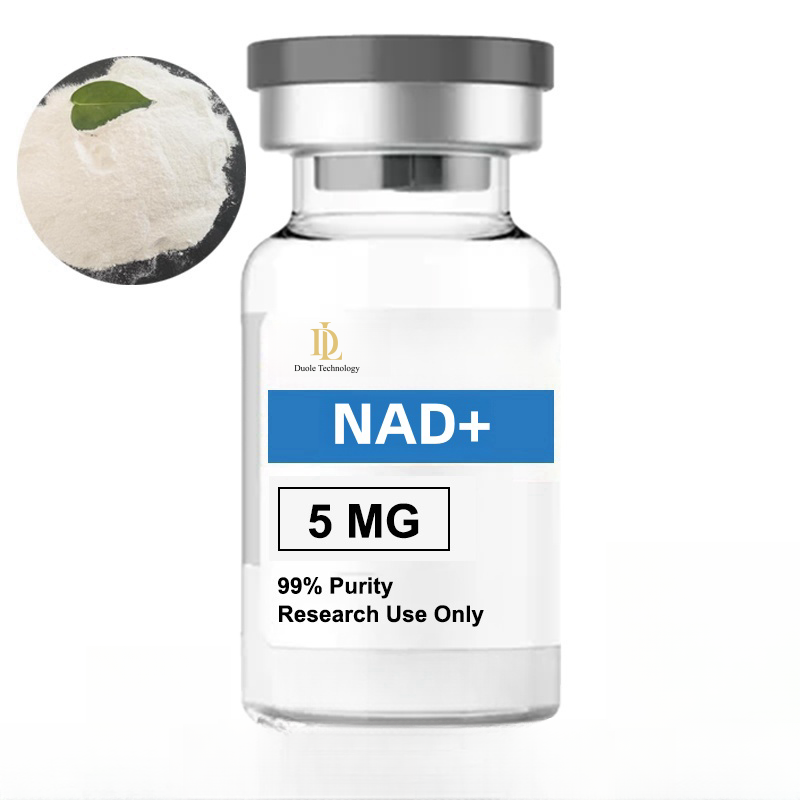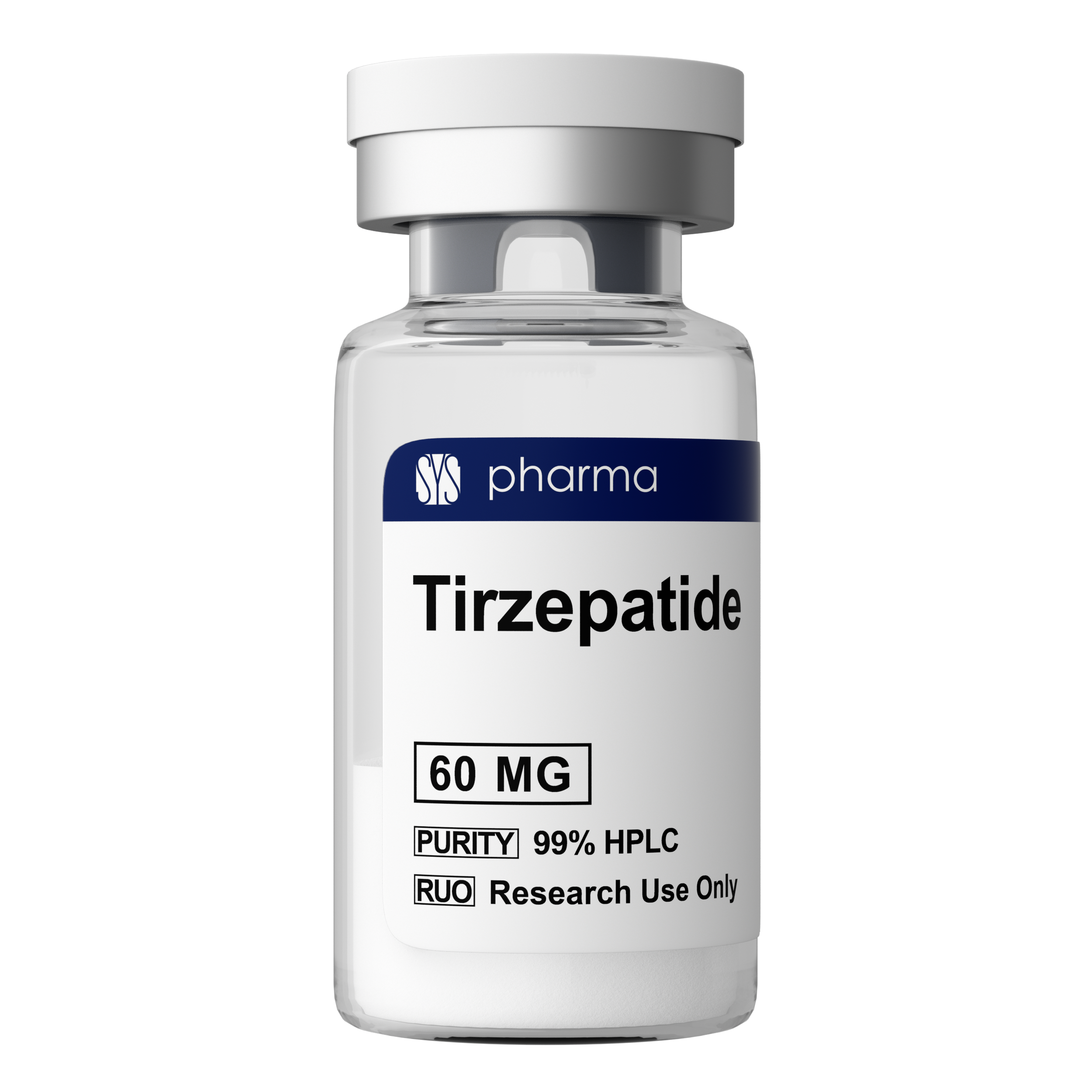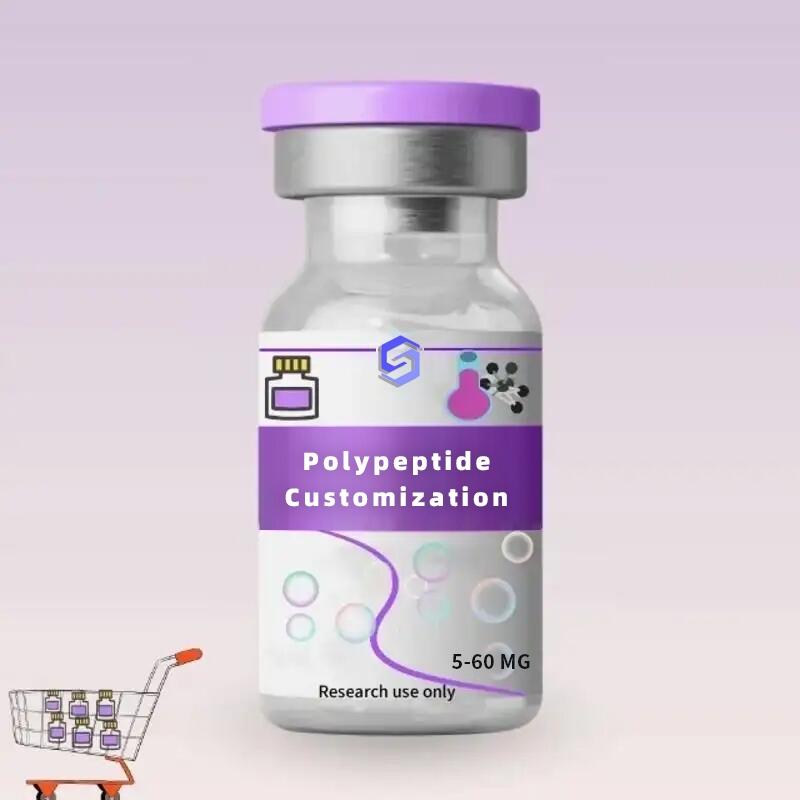-
Categories
-
Pharmaceutical Intermediates
-
Active Pharmaceutical Ingredients
-
Food Additives
- Industrial Coatings
- Agrochemicals
- Dyes and Pigments
- Surfactant
- Flavors and Fragrances
- Chemical Reagents
- Catalyst and Auxiliary
- Natural Products
- Inorganic Chemistry
-
Organic Chemistry
-
Biochemical Engineering
- Analytical Chemistry
-
Cosmetic Ingredient
- Water Treatment Chemical
-
Pharmaceutical Intermediates
Promotion
ECHEMI Mall
Wholesale
Weekly Price
Exhibition
News
-
Trade Service
In the 20 years since the publication of the first PROTAC molecule, this technology has been transformed from academia into preclinical and clinical new drug development projects, and in 2019, it first obtained clinical proof-of-concept in oncology, targeting protein degradation as a hot area
for new drug development.
In today's article, in order to comprehensively analyze the development context, latest progress and future R&D direction of protein degradation therapy, WuXi AppTec's content team will collate the R&D progress of global protein degradation therapy early-stage financing companies from 2021 to the present, and strive to get a glimpse of the future development direction
.
.
Seek a glimpse into the future direction
Summary of content
Summary of contentA list of emerging protein degradation talents with early financing in 2021-2022
A list of emerging protein degradation talents with early financing in 2021-2022At least 26 companies worldwide have raised $10 million or more in early-stage financing, raising a total of $1.
38 billion
There are 12 companies with protein-degradable drug pipelines and 14 companies developing enabling technologies for drug discovery
12 and 14A peek into future trends
A peek into future trendsThe direction of disease is constantly expanding to fields other than oncology: Matchpoint, Odyssey, etc.
are committed to inflammatory and immune diseases; Avilar, PAQ, etc.
target neurology and neurodegenerative diseases
Focus on platform empowerment and expand the scope of drug design: more than 50% of the cutting-edge development of molecular glue and PROTAC molecule identification, discovery and design platform; Lycia and Avilar have the LYTAC platform that targets pathogenic extracellular proteins; PAQ has the ATTEC technology platform that expands the therapeutic potential of autophagy
Focus on platform empowerment and expand the scope of drug design: more than 50% cutting-edgeDiversified strategies to solve the challenges encountered in protein degradation therapy: through different therapy types and drug discovery platform technologies, face challenges such as identifying target types suitable for protein degradation, optimizing structure to enhance druggability, and discovering new E3 ligases
Diverse strategies to address the challenges of protein-degrading therapies:Note: The early-stage financing protein degradation therapies discussed in this article meet all of the following conditions: (1) the time range is 2021/1/1-2022/11/15; (2) the financing round includes Series B and all rounds before Series B, excluding unknown rounds; (3) The financing amount ≥ 10 million US dollars; (4) The main business is in the field of targeted protein degradation; (5) Companies outside the scope of the analysis are not included in the analysis
Technological advances in protein-degrading therapies
Technological advances in protein-degrading therapiesProtein targeted degradation technology with the help of proteasome and lysosome, two organelles naturally present in the human body to accurately degrade pathogenic proteins, of which lysosomal degradation pathway derives two sub-paths with sub-pathways with slight differences, the current mainstream protein degradation pathways are roughly divided into three categories: ubiquitin-proteasome system-based, endosome-lysosomal pathway and autophagy-lysosomal pathway
.
▲Technological progress of protein degradation (Image source: WuXi AppTec content team mapping)
▲Technological progress of protein degradation (Image source: WuXi AppTec content team mapping)PROTAC and molecular glue are representative molecules
that degrade target proteins based on the ubiquitin-proteasome system.
The structure of PROTAC consists of an E3 ligand, a target protein ligand, and a linker
linking the above two parts.
The ligands at both ends of PROTAC recruit and bind E3 ligase to the target protein, respectively, and ubiquitin binds to the substrate protein under the cascade catalysis of E1, E2, and E3 enzymes, thereby inducing proteasome recognition and degradation of ubiquitinated target protein
.
The mechanism of action of molecular gels is to bind to E3 ligases, thereby altering the binding characteristics of E3 ligases so that they can bind
to new targets.
A single protein may not have enough binding sites, and molecular glue can create binding pockets for the target protein to bind tightly to
E3 ubiquitin ligase.
As an important place for digestion and decomposition of biological macromolecules in cells, lysosomes achieve protein degradation
through endocytosis, phagocytosis and autophagy.
Compared with the ubiquitin-proteasome system, lysosome-mediated protein degradation not only targets intracellular proteins, but also degrades protein aggregates and extracellular proteins, and emerging technologies such as LYTAC, AUTAC, ATTEC, etc.
belong to such pathways, broadening the application field
of protein degradation.
The technical principle of LYTAC degrading protein is that this molecule can bind to extracellular proteins at one end and to receptors such as CI-M6PR at the other end, and the triple complex is engulfed by the cell membrane and wrapped in the vesicle relay and transported to the lysosome for degradation
.
ATTEC can bind to LC3, a key protein in the lysosome-autophagy process, and the LC3 polymerization after lipidation is amplified into a membrane structure, and the pathogenic target protein is loaded to form a complete autophagysome, which is delivered to the lysosome for degradation
.
In addition, there are new technologies such as AUTAC, AUTOTAC, and PhosTACs, which drive the benign development of targeted protein degradation from the direction of expanding the scope of application of targeted protein degradation and accurately regulating protein function
Reviews Drug
A review article by Discovery The next stop in rational drug design, Beyond PROTAC, elaborates on the principles and use scenarios of these technologies that lead the future direction of protein degradation, which will not be repeated
here.
▲Comparison of different protein degradation technologies (Image source: Reference [2])
▲Comparison of different protein degradation technologies (Image source: Reference [2])Early financing panorama
Early financing panoramaWuXi AppTec's content team tracked and analyzed
the early investment and financing in the field of protein degradation in the 2021/1/1-2022/11/15 range.
According to incomplete statistics, during this period, more than 30 companies received more than $10 million in Series B and pre-round B financing, of which 26 companies announced the exact amount of financing for 29 financing events, totaling US$1.
38 billion
.
Companies that obtain financing can be roughly divided into two categories according to the nature of their business: one type of companies focuses on the development of protein degradable drugs (12 companies), and the other type of companies focuses on the development of enabling technologies for drug discovery (14 companies) (the company that defines the official website showing the relevant protein degradation pipeline is called a protein degradation drug development company, and the company that shows the platform for the development of protein degradation therapy and has not disclosed the protein degradation therapy development pipeline is called an enabling technology company).
In terms of financing amount, Enabling Technology companies led drug development companies
with a margin of 22% in total financing.
▲WuXi AppTec content team mapping
▲WuXi AppTec content team mappingAmong drug development companies, the technology path of the companies currently receiving financing is mainly molecular glue, PROTAC and other protein degradation therapies, accounting for 33%, 30% and 37%
respectively 。 The technology distribution pattern of enabling technology companies is more abundant, ATTEC, LYTEC and other cutting-edge technologies have begun to emerge, the proportion of PROTAC's financing amount has decreased, and the companies that develop different protein degradation technology platforms are listed in descending order of total financing: molecular glue, LYTAC, PROTAC, ATTEC, and others (Note: Others refer to protein degradation therapies other than PROTAC, molecular glue, ATTEC, AUTAC, LYTEC, Companies that did not disclose the type of protein degradation therapy were not included in the statistics).
Empower technology companies to build cutting-edge technology platforms, focusing on blank technology fields with great development potential; Drug development companies tend to invest more resources in developing proven, relatively mature technologies, and then select targets and build drug pipelines based on this to gradually develop
.
▲WuXi AppTec content team mapping
▲WuXi AppTec content team mappingA peek into future trends
A peek into future trends1 The direction of conquering diseases continues to expand beyond oncology
1 The direction of conquering diseases continues to expand beyond oncologyCurrently approved protein-degrading drugs (dostamines) and most newly developed clinical-stage PROTAC molecules and molecular gels are used to treat different types of cancer
.
By analyzing the types of diseases covered by early-stage protein degradation therapy R&D companies, the disease direction conquered is still mainly focused on tumors, including hematological tumors and solid tumors
.
However, the scope of targeted protein degradation is also expanding
beyond oncology.
.
However, the scope of targeted protein degradation is also expanding
beyond oncology.
Several companies developing PROTAC molecules and molecular glues such as Matchpoint Therapeutics and Odyssey
Therapeutics is committed to solving inflammatory and immune diseases through the covalent compound discovery enabling platform; On June 13 this year, Kangpu Biopharma's molecular gel KPG-818 for the treatment of systemic lupus erythematosus (SLE) Phase 2a clinical trial completed the first patient administration
in the United States.
Avilar
The ATAC platform (based on LYTAC technology) and PAQ developed by Therapeutics
The ATTEC platform developed by Therapeutics focuses on neurology and neurodegenerative diseases where patients are expected to benefit
from protein-degrading therapies in the future.
▲Early financing protein degradation therapy company to conquer the direction of disease (Image source: WuXi AppTec content team mapping)
▲Early financing protein degradation therapy company to conquer the direction of disease (Image source: WuXi AppTec content team mapping)2 Focus on platform empowerment and expand the scope of drug design
2 Focus on platform empowerment and expand the scope of drug designHistorically, the process of new drug development can be divided into three stages, relying on natural products that do not know the exact active molecule, knowing the exact molecular information but not knowing the specific mechanism of action, and rational drug design
.
As a representative of rational drug design, protein degradation therapy opens new doors for targeting difficult-to-drug targets, and the drug discovery process itself can also use new strategies
.
Early investment is also going to "platform" or "discovery engine" enabled protein degradation therapy R&D companies, which may better mimic biological systems, increase the speed and scale of development, and make the exploration of the chemical space more effective and widespread
.
.
Early investment is also going to "platform" or "discovery engine" enabled protein degradation therapy R&D companies, which may better mimic biological systems, increase the speed and scale of development, and make the exploration of the chemical space more effective and widespread
▲Emerging protein degradation companies that develop platform technologies (Image source: WuXi AppTec content team mapping)
▲Emerging protein degradation companies that develop platform technologies (Image source: WuXi AppTec content team mapping)More than half of the 14 "platform" or "discovery engine" enabled protein degradation therapy R&D companies are dedicated to the identification, discovery and design
of molecular glues and PROTAC molecules.
For example, Triana
Biomedicines is working to develop E3 ligase-based molecular gels to treat undisclosed indications
by targeting protein degradation.
The company's drug discovery engine searches 600 different E3 ligases to select the best E3 ligase for drug development
based on indications and targets.
Lycia Therapeutics and Avilar
Therapeutics has the LYTAC technology platform
that targets pathogenic extracellular proteins.
Lycia
Therapeutics developed LYTAC to target untapped extracellular proteomes, including cell surface receptors and secreted proteins, and entered into a strategic collaboration with Eli Lilly to discover and develop novel degradation therapies
for up to five targets using Lycia's LYTAC platform.
Avilar
The ATAC developed by Therapeutics aims to target disease-causing extracellular proteins by utilizing the sialic acid glycoprotein receptor (ASGPR) expressed on the surface of liver cells, which mediates the entry of extracellular proteins into hepatocytes and degradation by lysosomes
.
PAQ
Therapeutics' core technology ATTEC originated from the breakthrough research of Professor Lu Bocheng's research group at Fudan University and was published
in Nature in 2019.
It can bind to a protein called LC3 in autophagosomes on the one hand, and to the mutated huntingtin protein (mHTT) on the other, and has the potential to selectively catalyze and accelerate autophagy-dependent degradation to remove a variety of pathogenic substrates, including proteins and non-proteins, such as polymers, mitochondria, lipids, and pathogens
.
3 Use multiple strategies to overcome the challenges of protein degradation
3 Use multiple strategies to overcome the challenges of protein degradationAt present, the research and development of protein degradation therapy faces multiple challenges
.
The first wave of clinical-stage protein-degrading drugs targeted mature targets that had already been clinically validated, such as the androgen and estrogen receptors
selected by Arvinas.
The real potential of protein degradation therapy lies in reaching targets that are difficult or non-druggable in current treatment models, and are still in the exploration stage
.
Understanding which targets are ideal targets for protein degradation therapy is one of
the main challenges to be addressed.
Gebo Bio has built a molecular gel and new target discovery technology platform, which improves the discovery success rate and optimization efficiency
of molecular gel drugs through high-throughput screening, multi-omics and structural biology, and rational design tools such as machine learning and degradation unit prediction for a variety of "undruggable" pathogenic protein targets 。 Dunad
Therapeutics' unique small molecule platform has the potential to develop oral bioavailable and central nervous system available degradation therapies by directly modifying targets with monovalent small molecules to induce targeting of normally undruggable degradation pathogenic proteins, and to expand the frontiers
of protein degradation targets.
Due to the three-component chimera structure of PROTAC molecules, the molecular weight is large, resulting in the development of most PROTAC molecules facing pharmacokinetic (PK) characteristics, low solubility and cell permeability, low oral bioavailability and other druggability challenges
.
Many disease-associated proteins carry intrinsic disordered regions that conventional small molecule drugs cannot target, yet thousands of proteins with such intrinsically disordered regions have been found to interact
with adaptor proteins called 14-3-3.
When binding to a disordered protein region, the 14-3-3 protein can induce the disordered protein to form a stable structure that binds to it, giving them druggability
.
Ambagon
Therapeutics applies in-depth knowledge of 14-3-3 proteins and a proprietary set of drug discovery tools to create molecular glues
that stabilize the complex structure of 14-3-3 and interacting proteins.
At the same time, although the design of PROTAC molecules based on the recruitment of CRBN and VHL ligase has become increasingly mature, their preclinical and clinical development still faces multiple challenges, and the potential to target protein degradation has led both academia and the pharmaceutical community to explore new E3 ligases
.
Pin
Therapeutics selected about 30 E3 ligases suitable for drug development from a total of about 600 E3 ligases through analysis, and established a platform technology to efficiently identify E3 ligases
with improved drug properties in a short period of time.
Triana
Biomedicines' drug discovery engine searches for 600 different E3 ligases and selects the best E3 ligase for drug development
based on indications and targets.
the main challenges that need to be solved 。 Faced with pharmacokinetic (PK) characteristics, low solubility and cell permeability, low oral bioavailability, druggability challenges, stable 14-3-3 and interaction protein formation complex structure molecular glue-targeted protein degradation potential, so that the academic and pharmaceutical communities are exploring new E3 ligases, which can effectively identify E3 ligases with improved drug properties in a short period of time, and select the best E3 ligase for drug development according to indications and targets
▲Emerging companies use diversified strategies to solve challenges (Image source: WuXi AppTec content team mapping)
▲Emerging companies use diversified strategies to solve challenges (Image source: WuXi AppTec content team mapping)These companies that received early-stage financing in 2021-2022 are using innovative approaches to address these challenges
through different therapeutic types, as well as drug discovery platform technologies.
In summary, protein degradation therapy is still an emerging young field, and a lot of progress has been made.
It is hoped that future protein-degrading therapies will provide more innovative treatment options
for patients with a wide range of diseases.
Attached table: Specific financing of 26 early-stage financing protein degradation therapy financing companies
Attached table: Specific financing of 26 early-stage financing protein degradation therapy financing companies







